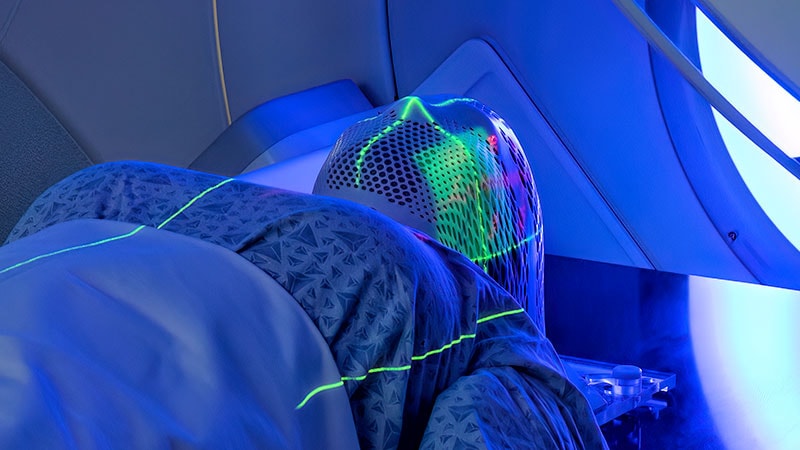Daily adaptive radiotherapy can improve salivary gland sparing and lead to fewer acute toxicities for patients with squamous cell head and neck cancer, according to results from a randomized trial presented at the American Society for Radiation Oncology (ASTRO) 2023 Annual Meeting.
Overall, daily adaptive radiotherapy with 1-mm planning tumor volumes reduced radiation exposure and was associated with less dermatitis and improved salivary outcomes, said lead investigator David Sher, MD, chief of radiation oncology at the University of Texas Southwestern Medical Center, Dallas.
Adaptive radiotherapy, a concept introduced in the 1990s, updates radiation plans to adjust for anatomic changes in patients and their disease. Daily adaptive radiotherapy (DART) makes the adjustment before each fraction, allowing for tighter planning of tumor volume margins and less collateral damage to nearby healthy tissue.
The investigators used the Ethos system from Varian Medical Systems to deliver online DART. Introduced in 2020, Ethos is a cone beam CT-based system that uses artificial intelligence and machine learning to perform adaptive radiotherapy.
The study team randomly assigned 24 patients to receive DART and 26 to receive standard image-guided radiotherapy with radiation delivered in 35 fractions.
The mean age of the patients was 60 years, and most were men. About 75% had oropharynx cancer, and the remaining 25% had larynx/hypopharynx tumors; most patients had stage III to IVb disease. Over 90% of patients also received cisplatin, carboplatin-paclitaxel, or cetuximab chemotherapy.
Overall, the gross tumor volume received 70 Gy. The primary clinical target volumes and suspicious nodes received 63 Gy. Nodes that were on the same level as nodal gross tumor volume or were identified using an AI algorithm received 56 Gy.
The planning tumor volume margin in the DART arm was 1 mm, vs 5 mm in the standard radiotherapy arm. Treatment time with DART was longer — 33 minutes overall. During that time, the physician was at the console for 22 minutes.
Tighter planning of tumor volumes translated to significantly less radiation to nearby salivary glands, including ipsilateral parotid glands (11.5 Gy with DART vs 16 Gy) and ipsilateral (42.2 Gy vs 56.3 Gy), and contralateral (28.2 Gy vs 36.5 Gy) submandibular glands.
Patients in the DART group experienced significantly less acute grade 2 or higher dermatitis (8% vs 31%), and among these patients there was a trend toward less grade 2 or higher mucositis (72% with DART vs 95%).
There were no differences in xerostomia, the sensation of oral dryness, in the short term, but 3-month trends favored DART, with these patients scoring lower on the Xerostomia Questionnaire (31.2 points vs 43.1; P = .2). This trend persisted at 6 months.
“We see that from 3 to 6 months, as the salivary glands recover, perhaps there’s more recovery in the daily adaptive arm,” Sher said.
Scores for sticky saliva were also significantly better with DART at both 3 and 6 months, probably “due to the improved submandibular gland sparing,” he said.
Moderator Beth Beadle, MD, PhD, a radiation oncologist at Stanford University, California, noted the “very convincing difference” between the two arms but wondered why xerostomia differences weren’t more pronounced.
Sher commented that a possible reason is that the total salivary dosimetry was pretty favorable in both arms.
Overall, the researchers concluded that for patients with head and neck cancer, DART “may improve physician- and patient-reported acute toxicity profiles, albeit with increased resource utilization.”
The study was funded by Varian Medical Systems. Sher has received a research grant from the company.
American Society for Radiation Oncology (ASTRO) 2023 Annual Meeting: Abstract LBA 08.
M. Alexander Otto is a physician assistant with a master’s degree in medical science and a journalism degree from Newhouse. He is an award-winning medical journalist who worked for several major news outlets before joining Medscape. Alex is also an MIT Knight Science Journalism fellow. Email: [email protected].
For more news, follow Medscape on Facebook, X, Instagram, and YouTube.
Source: Read Full Article
